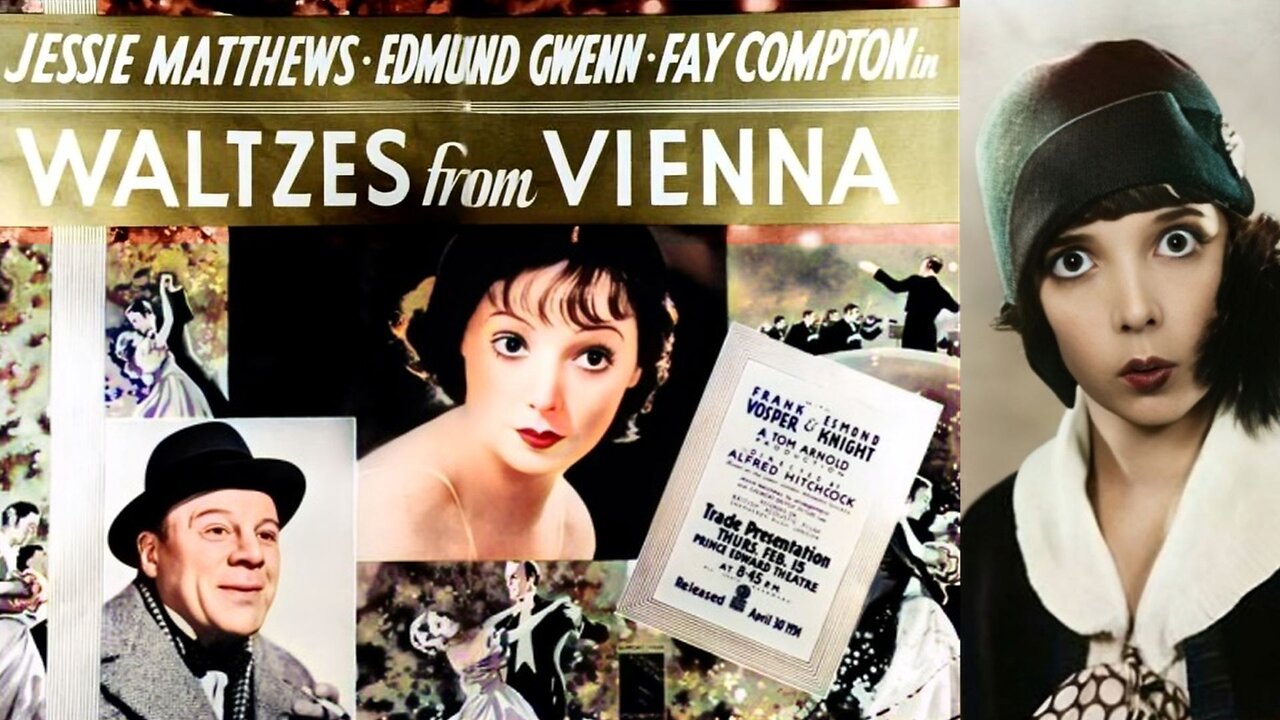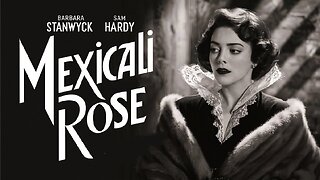Premium Only Content

WALTZES FROM VIENNA (1934) Edmund Gwenn, Esmond Knight & Jessie Matthews | Biography, Romance | B&W
Hitchcock's film is based on the stage musical Waltzes from Vienna, which premiered in Vienna in October 1930. With a libretto by A. M. Willner, Heinz Reichert and Ernst Marischka, this stage production contains music by Johann Strauss I and Johann Strauss II, selected and arranged by Erich Wolfgang Korngold and Julius Bittner into discrete musical numbers. Hitchcock, however, did not include these musical numbers in his film. In addition, he changed the end of the story. In the stage musical, Resi, the baker's daughter, decides that her father's apprentice, Leopold, will make a more suitable husband than the composer, Schani (Johann Strauss II). By contrast, Hitchcock's film rendition ends with Resi and Schani declaring their love for each other.
SYNOPSIS
The story of Johann Strauss the elder and younger.
Waltzes from Vienna begins with the sound of a fire brigade horn and the clip-clop of horses’ hooves, as the firemen race towards a fire at Ebezeder's Café. Upstairs from the café, Resi and Schani are oblivious to the danger, lost in a love duet that concludes with Schani telling Resi that he has dedicated his newest song to her. At the same time, Schani's music attracts the attention of the Countess Helga von Stahl, who is shopping in the dressmaker's store next door. Schani and Resi's romantic interlude is interrupted by Leopold, a baker in Resi's father's café who is in love with Resi, as he awkwardly climbs up the ladder to save her. Schani and Leopold argue over who will save Resi from the fire, but Leopold eventually wins and hauls Resi over his shoulder and down the ladder, causing her to lose her skirt on the way. Resi races to the dressmaker's shop to get away from the laughter of the onlookers. Schani retrieves Resi's skirt and then stumbles into the dressmaker's in search of Resi, where he meets the Countess. When the Countess learns that Schani is an aspiring musician, she proposes that he set some of her verses to music. As the Countess offers Schani her card, Resi enters the room and becomes immediately suspicious of the Countess's intentions.
Excited by his newfound freedom and the commission from the Countess, Schani visits Resi at her father's bakery to tell her his news. Resi initially berates Schani and informs him that, if he wants to marry her, he will have to give up music and take over the bakery. However, when she reads the Countess's lyrics, she is drawn into the music, singing the opening of The Blue Danube waltz to Schani. Their moment of composition is interrupted when Resi's father arrives to give Schani a tour of the bakery. As Schani and Ebezeder walk into the basement, a memorable and unusual scene of musical composition begins. While Schani looks around, the tune that Resi sang begins to evolve. Two men throwing bread back and forth inspire the second phrase of the melody; a man tossing croissants into a box creates the offbeat rhythm of the waltz. The rhythm of the dough mixing machine provides Schani with the second main theme of the first waltz. As he tells the begrudging Leopold to go faster, this second theme turns into the beginning of the second large section of piece, at which point Schani runs upstairs, exclaiming to Resi that he has finished the composition. He then rushes off to tell the Countess that he has composed the perfect waltz to accompany her verses.
The duplicitous dedication is discovered when Resi hears Schani and the Countess playing the waltz for the publisher, Anton Drexler. Schani runs after Resi to explain and they reconcile only when Schani tells her that he will give up his music to work in the bakery. However, Schani is clearly miserable in his new job and he fights with Resi when he receives an invitation from the Countess to attend St. Stephen's Festival. Resi tells Schani that, if he attends, it will mean the end of their relationship. Meanwhile, the Countess plots a ruse that will cause Strauss Sr. to be late for the festival so that Schani can take his father's place to conduct his new waltz.
As Schani conducts The Blue Danube at the festival, all of the film's conflicts come to a climax. The Countess detains the elder Strauss by asking the dancers at the festival to play to his ego, requesting that he play his waltzes over and over for their pleasure in a back room. Strauss Sr. finally arrives to find that his son has taken his place, performing for an enthusiastic audience. Meanwhile, Resi laments that Schani betrayed her by coming to the festival at the Countess's command.
CAST & CREW
Esmond Knight as Johann "Schani" Strauss, the Younger
Jessie Matthews as Resi Ebezeder
Edmund Gwenn as Johann Strauss, the Elder
Fay Compton as Countess Helga von Stahl
Frank Vosper as Prince Gustav
Robert Hale as Ebezeder
Marcus Barron as Anton Drexler
Charles Heslop as Valet
Betty Huntley-Wright as Lady's Maid
Directed by Alfred Hitchcock
Screenplay by Guy Bolton, Alma Reville
Based on Walzer aus Wien by Alfred Maria Willner, Heinz Reichert, Ernst Marischka
Produced by Tom Arnold
Cinematography Glen MacWilliams
Music by Hubert Bath, Julius Bittner, Erich Wolfgang Korngold, Louis Levy
Production companies Gaumont British, Tom Arnold Films
Distributed by Gaumont British
Release date March 7, 1934 (UK)
Running time 80 minutes
Country United Kingdom
Language English
-
 1:00:01
1:00:01
Lost n Found Films
4 hours agoMEXICALI ROSE (1929) Barbara Stanwyck, Sam Hardy & William Janney | Drama | B&W | Timeless Film
8 -
 2:04:30
2:04:30
TimcastIRL
9 hours agoEpstein Files Release IMMINENT, Trump AG Says The List Is ON HER DESK w/ Will Chamberlain
148K203 -
 1:25:35
1:25:35
Roseanne Barr
15 hours ago $46.14 earnedKash Me Outside, Pedos | The Roseanne Barr Podcast #88
85K81 -
 1:21:55
1:21:55
Kim Iversen
11 hours agoMultiple States To BAN mRNA Vaccines | They Want to Make Protesting Illegal, Here's How
63.5K95 -
 7:34:25
7:34:25
Dr Disrespect
17 hours ago🔴LIVE - DR DISRESPECT - WARZONE - IMPOSSIBLE TRIPLE THREAT CHALLENGE
196K29 -
 1:02:45
1:02:45
Tundra Tactical
8 hours ago $19.79 earned🛑 KASH PATEL NEW ATF DIRECTOR??? Breaking News!!!! 🛑
64.3K9 -
 4:31:10
4:31:10
I_Came_With_Fire_Podcast
18 hours agoMy EURO Divorce | HOGG with a side of PAC | Foreign FUNDS Fudged
34K2 -
 37:44
37:44
Glenn Greenwald
14 hours agoGlenn On Tearing Down the Military Industrial Complex, Exposing Pro-Israel Indoctrination, and More | SYSTEM UPDATE #411
115K125 -
 4:04:20
4:04:20
Nerdrotic
14 hours ago $51.23 earnedAmazon Takes 007! Hollywood is Lost, Disney Cancels WHO? | Friday Night Tights 342 /w ItsAGundam
171K42 -
 43:27
43:27
Tucker Carlson
13 hours agoRay Dalio: America’s Hidden Civil War, and the Race to Beat China in Tech, Economics, and Academia
169K190